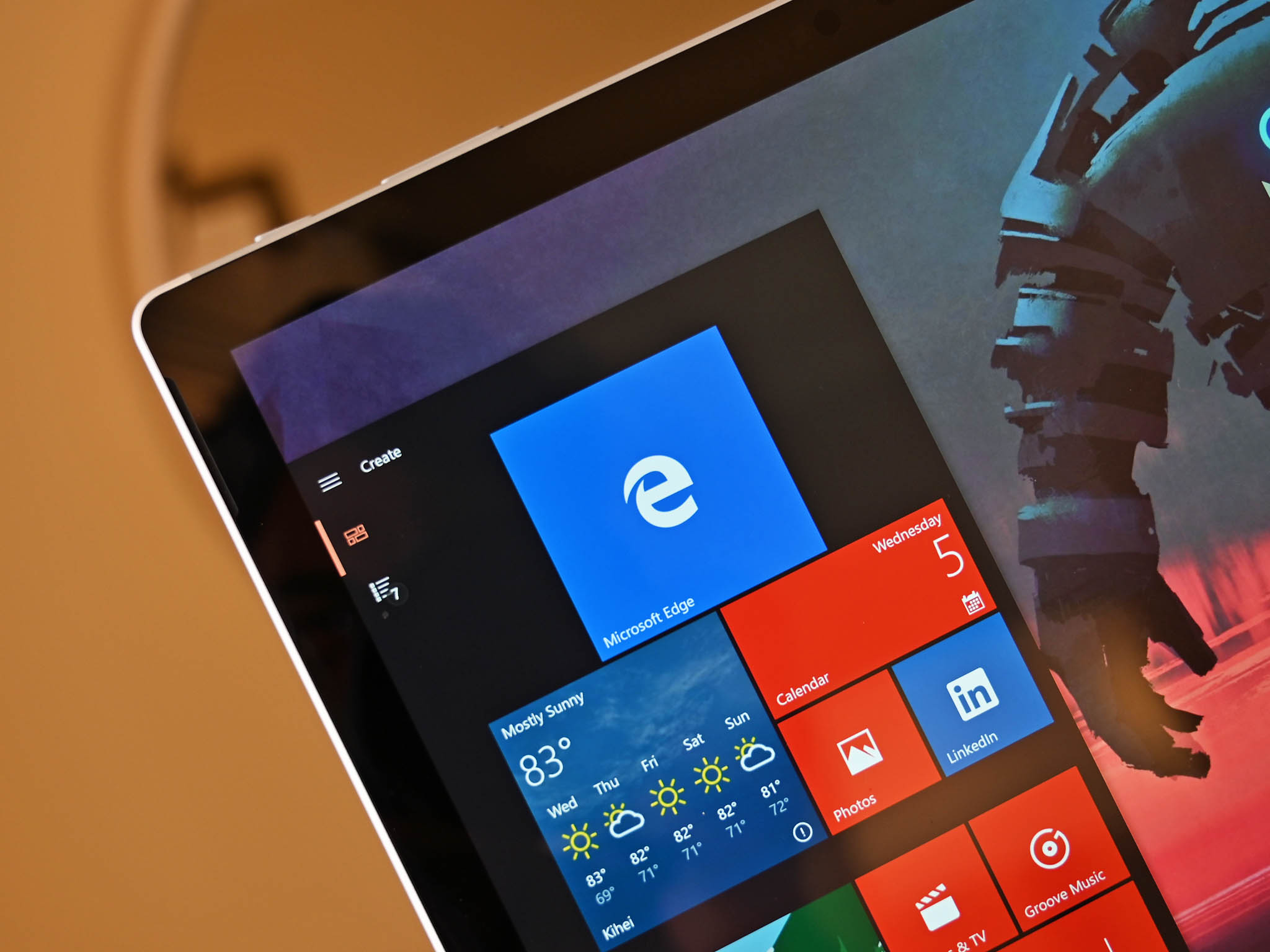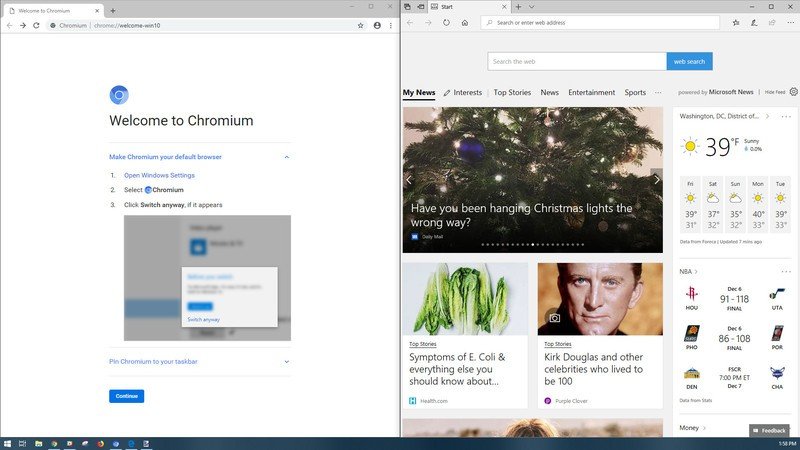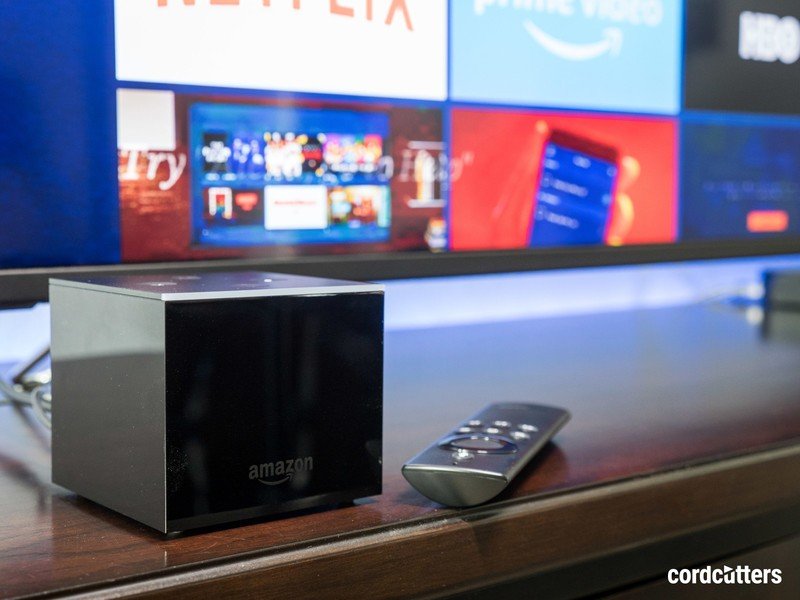What is Chromium and why is Microsoft using it for Edge?

Microsoft's announcement that it will rebuild its Edge browser using Chromium was a bit of a shocker. It almost sounds like Microsoft has decided to let Google build the web browser of choice for Windows computers, and that's a change that would affect a couple billion people, most of which wouldn't even know, as long as they see the familiar icon in the Start menu. It would also be a change that gives Google a billion more users by default and heads down a path where there is only one company and one choice if you want to use the web. Nobody wants that. Thankfully, that's not the case. And Chromium is very different than Chrome.
While Chromium is a project started by Google, it's really not what you might think it is. And that's because of its open-source nature, which allows it to be anything.
Related: Everything you need to know about Microsoft Edge, Chromium, and Blink
What's in a name?

Google has a frustrating way of using the same name for things that really aren't the same. Android is a good example. Everyone knows what Android is: it's the OS used in a couple billion smartphones made by 100 or so different companies. But it's also an open-source application framework used by companies like the now-defunct Research In Motion (RIM), the company that used to make BlackBerrys, and an open-source base for a standalone OS that companies like Amazon, Delta Airlines, and Exxon use to power tablets, in-flight infotainment systems, and unmanned payment kiosks that are built using the Android Open Source Project.
Microsoft is smart to use what has already been built instead of spending billions to rebuild.
Chromium is very similar. You can install a standalone application for Windows, macOS and any flavor of Linux named Chromium that's a complete web browser complete with synchronization through Google's could services. But Chromium is also the name of the open-source code project used to make Chromium, as well as the Chrome web browser, Chrome OS, Amazon Silk, and the Android Chrome web-view component companies like Twitter can use to build a browser into an application.
The latter is the part that has Microsoft interested. Google started the Chromium project and has done a lot of work to make it easy for anyone to download the source code, modify it as they see fit, and create their own product. Chromium can be used to build any type of browser, like a file manager, photo gallery or a web browser. The company building the final product can change anything it likes in the code and use any parts of it. Having this ready-made and working base code means that Microsoft doesn't have to spend several years and several billion dollars to build itself.
It doesn't mean that Google is in your web browser once Microsoft uses the Chromium source code to make the new and improved Edge.
Be an expert in 5 minutes
Get the latest news from Android Central, your trusted companion in the world of Android
Chrome vs. Chromium vs. Edge

The Chromium code can be used as-is and built into a familiar looking web browser, but it's very different than the Chrome web browser. The basics are present in both: the design of the interface, the Blink rendering engine, and the option to synchronize all your user data in Google's cloud. But that's where the similarities end.
Google adds plenty of its own closed source and proprietary pieces into the Chrome browser that Chromium lacks. These options aren't available in Chromium and need to be added by an end user like you or me or by any company using the Chromium source to build its own standalone product. What follows is a list of them.
Media codecs
Chrome includes licensed codecs for AAC, H.264, and MP3 file support. Support for a set of "free" codecs is included, and those are Opus, Theora, Vorbis VP8, VP9, and WAV. Without the proprietary codecs, Chromium can't play a lot of content on the web, including HTML5 videos streamed in the H.264 codec and web media mostly sucks.
Adobe Flash Player
Flash content isn't dead, and the Chrome web browser includes a sandboxed API (the Pepper API also known as PPAPI) that gets constant security updates to play it in the browser window. A Flash player is not free. Anything not free isn't included in the Chromium source.
Background updates
Chrome has a mechanic to automatically update with patches for web exploits and new features the same as Microsoft does for Windows. Chromium lacks this.
Automatic security sandboxing
Chromium includes a sandbox that prevents any type of code from making any changes to any files outside of its own. That means malware ads can't change your settings or get into your address book. But in Chromium, it can be disabled. Google's Chrome web browser enforces the sandbox and won't run without nagging you that it's not fully functional.
Extension install policies
Chrome only allows extensions hosted at the Chrome Web Store to be installed unless you enter developer mode. Chromium has no such mechanic and can install a properly built extension from anywhere.
Error logging and reporting
Chrome has an option to automatically send crash reports to Google and Chromium doesn't.
Microsoft won't be trying to build Google Chrome. It's going to use the Chromium source to make Edge into a better browser, especially for ARM tablets and laptops. That means it will have to supply any of the above tools and options itself. Microsoft certainly will, too. And it will not use some of the tools Chromium includes, like synchronization of user data through the Google cloud. Edge is Microsoft's product and will sync through your Microsoft account, and Chromium can be built with that option included because it's open source. All of Edge's current features could be built into Chromium as well as any new features for always-connected tablets and laptops that Microsoft develops.
Amazon's Silk browser is a perfect example of this. Amazon uses Chromium as a base for its browser for Fire OS devices like Kindle tablets or the Echo Show, but it includes plenty of Amazon-centric options like sync and casting to Fire TV devices. Chromium did a lot of the hard work for things like page rendering and tabbed browsing but Amazon ditched much of the rest and built it into a product of its own. That's what Microsoft will do.
Chromium is more than just Google

Chromium was started by Google in 2008 and is maintained by Google, but it isn't the only company that helps make it. Anyone can contribute, and plenty of other companies you'll recognize have helped turn it into a stable and lightweight (yes, this isn't Chrome and is a lot less resource-intensive) tabbed browsing shell for the web and more. Code for Chromium comes from these companies as well as Google:
- Samsung.
- Intel.
- NVIDIA.
- Adobe.
- Opera.
- Motorola.
- Microsoft.
Microsoft is a new addition, but it will have a big impact in the very near future, especially when it comes to ARM64 versions. Microsoft and Qualcomm have staked their future on ARM64, and that means plenty of attention will go towards Windows applications for the architecture. Like Edge, and that means Chromium.
Microsoft doesn't have to contribute its changes to Chromium. Amazon doesn't. But I'm almost certain that Microsoft will because it makes sense. One good idea gets better when other really smart people can keep working on it. Why not have the amazing developers at companies like Intel or Samsung improve the things you have implemented, right? That can only happen if Microsoft sends its code changes back upstream to the Chromium source.
It's not all roses in Chromium land

On the surface, it looks like Microsoft leveraging Chromium to improve Edge (for the technophiles out there, Microsoft probably just wants to swap EdgeHTML and Chakra for Blink and V8) is great. But it's not going to fix everything.
One not-so-positive bit of fallout is that Firefox and Safari are now the only browsers with measurable numbers that aren't built with the Blink rendering engine. When you look at market share, especially if you're a web developer, that means almost everyone on the planet that can use the web is using Chromium's Blink rendering engine to do it. If you had to develop a web application that didn't render the same using Mozilla's Gecko engine as it does with Blink, you would be crazy to not make the changes for it to run better on the version with 2 billion more users.
In a posting on GitHub, Microsoft said it will try to prevent Blink (and by default Chromium and Google) from taking over the web by essentially having veto powers on web standards. From Microsoft:
We believe the evolution of the open web is best served through the standards communities, and the open web benefits from open debate from a wide variety of perspectives. We will remain deeply and vigorously engaged in the standards discussions in the context of the W3C, ECMA and the WHATWG where the perspectives of vendors developing competing browsers and the larger web community can be heard and considered.
Microsoft has come a long way since its "embrace, extend, and extinguish" days of the early 2000s. If it follows through with its promise to remember that Google shouldn't hold the keys to the web and web standards, that means everyone benefits.
I'm hopeful that will be the case ... even if Mozilla CEO Chris Beard isn't.

Jerry is an amateur woodworker and struggling shade tree mechanic. There's nothing he can't take apart, but many things he can't reassemble. You'll find him writing and speaking his loud opinion on Android Central and occasionally on Threads.
